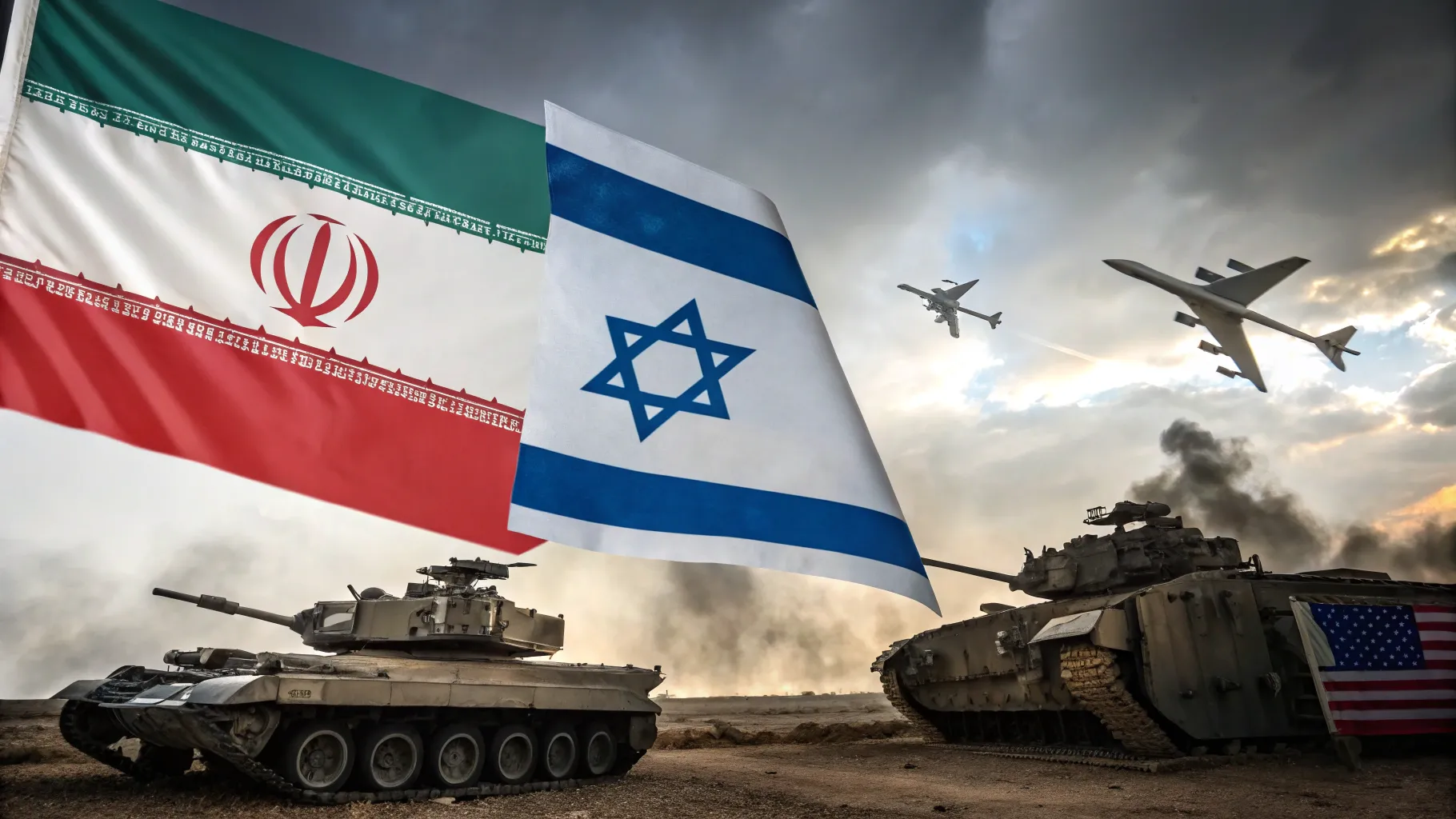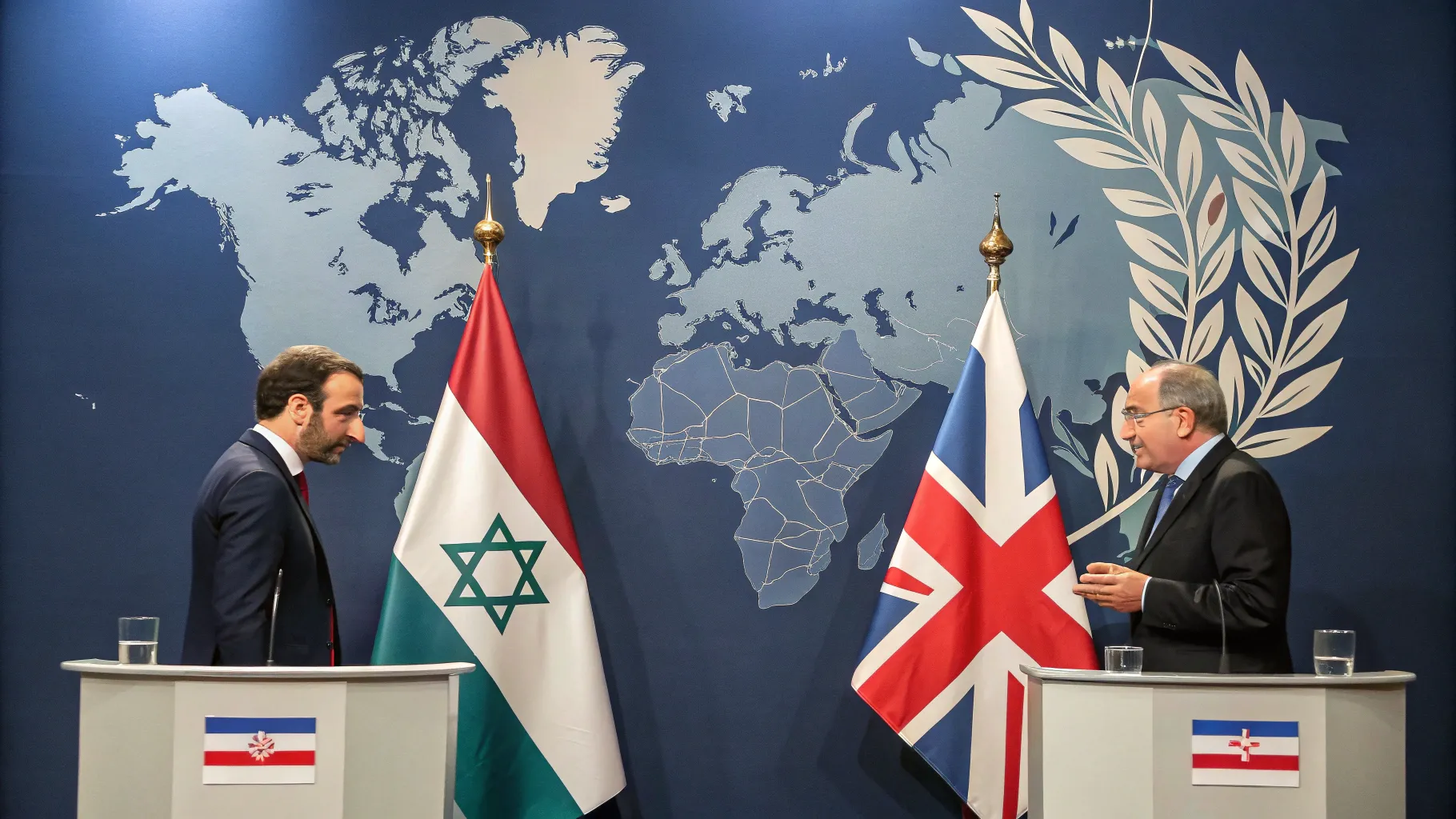The ongoing geopolitical tension between Iran and Israel has long been a subject of intense global scrutiny. Pinaki Bhattacharya’s insightful examination titled “কে জিতলো ইরান না ইজরায়েল ?” (Who Won: Iran or Israel?) delves deep into the complexities underpinning this rivalry. In this comprehensive article, we explore the multifaceted dimensions of this conflict, analyzing technological advancements, diplomatic maneuvers, military capabilities, and international influences that shape the current state of affairs between these two nations.

Introduction: Setting the Stage for the Iran-Israel Rivalry
At the heart of Middle Eastern geopolitics lies the fierce competition between Iran and Israel, two countries whose enmity has ripple effects far beyond their borders. This rivalry is not merely a regional dispute; it involves a complex interplay of military technology, international diplomacy, and ideological conflict. Pinaki Bhattacharya’s analysis provides a critical lens through which to understand who is gaining the upper hand in this ongoing confrontation.
This article aims to unpack the layered issues discussed by Bhattacharya, offering clarity on the military innovations, diplomatic alignments, and strategic narratives that define the Iran-Israel conflict. We will also examine the broader implications for global security and regional stability.

Military Technology and Defense Capabilities: The Battle of Innovations
Iran’s Drone Swarms and Air Defense Systems
One of the most striking points raised in the discussion is Iran’s advancement in drone technology. The country has reportedly developed a “swarm” of drones, potentially numbering in the millions, that could overwhelm traditional air defense systems. This innovation represents a significant leap forward in asymmetric warfare, allowing Iran to challenge the air superiority traditionally enjoyed by Israel.
Drone swarms can be used for various purposes, including reconnaissance, targeted strikes, and electronic warfare. The ability to deploy large numbers of drones simultaneously poses a serious threat to Israel’s sophisticated air defense network, which has been a cornerstone of its military strategy.
Israel’s Iron Dome and Missile Defense
Israel’s Iron Dome remains one of the most celebrated missile defense systems globally. Designed to intercept short-range rockets and artillery shells, the Iron Dome has proven highly effective in protecting Israeli civilian populations from incoming threats. However, the emergence of drone swarms and other advanced missile technologies challenges the system’s efficacy.
While Israel continues to invest heavily in upgrading its air defense capabilities, including the development of newer systems like David’s Sling and Arrow missile interceptors, the evolving nature of threats from Iran means that maintaining technological superiority is an ongoing battle.
Cruise Missile Technology and Its Strategic Impact
Cruise missiles, with their precision and long-range capabilities, have become a focal point in the military balance between Iran and Israel. Iran’s progress in cruise missile technology adds another layer of complexity, enabling it to threaten Israeli targets with greater accuracy and from a distance.
This capability not only enhances Iran’s deterrence posture but also complicates Israel’s defense planning. The interplay of missile and drone technologies creates a dynamic battlefield where traditional defense systems must constantly adapt.

Diplomatic Dynamics: The Role of International Players
France, the UK, and Diplomatic Support
Beyond military might, the Iran-Israel conflict is deeply influenced by international diplomacy. France and the United Kingdom have played varying roles, often advocating for diplomatic resolutions while maintaining strategic interests in the region.
These European powers, through diplomatic channels and international organizations, have sought to mediate tensions and curb escalation. Their support or opposition to Iran’s nuclear ambitions and Israel’s security concerns significantly impacts the conflict’s trajectory.
America’s Influence and Policy Shifts
The United States remains a critical actor in the Iran-Israel rivalry. American support for Israel is well-documented, encompassing military aid, intelligence sharing, and diplomatic backing. However, U.S. policy towards Iran has fluctuated over the years, especially during the Trump administration, which adopted a hardline stance with maximum sanctions and withdrawal from the Iran nuclear deal.
These shifts have intensified tensions, with Iran responding to sanctions by accelerating its nuclear program and military developments. The complex U.S. involvement underscores how external powers shape the conflict’s dynamics.
Israel’s Diplomatic Maneuvers and Regional Alliances
Israel has actively sought to isolate Iran diplomatically while building strategic partnerships in the Middle East. The Abraham Accords, normalizing relations with several Arab states, aim to create a united front against Iranian influence.
These alliances not only enhance Israel’s security but also reshape regional power balances, impacting Iran’s strategic calculations. Diplomatic isolation combined with military pressure forms a dual strategy employed by Israel.
The Nuclear Question: Iran’s Atomic Ambitions and Global Reactions
The question of Iran’s nuclear program is central to the Iran-Israel conflict. Iran insists its nuclear activities are for peaceful purposes, under the oversight of the International Atomic Energy Agency (IAEA). However, Israel and many Western nations suspect Iran of pursuing nuclear weapons capabilities.
This suspicion fuels Israel’s security concerns and justifies its aggressive posture. The potential for nuclear proliferation in the region adds urgency to diplomatic efforts aimed at containment and verification.
Bhattacharya highlights the tension surrounding Iran’s compliance with international nuclear agreements and the challenges faced by the IAEA in monitoring activities. The nuclear issue remains a flashpoint with the potential to escalate the conflict dramatically.
Media, Propaganda, and Public Perception
The battle between Iran and Israel is not fought solely on the ground or in diplomatic halls; it also unfolds in the realm of media and public perception. Both countries utilize media channels to propagate their narratives, rally domestic support, and influence international opinion.
State-controlled media in Iran and Israel often highlight their respective achievements and portray the adversary negatively. This information warfare shapes the broader understanding of the conflict and can escalate tensions by reinforcing entrenched positions.
Role of Social Media and International Coverage
Social media platforms serve as powerful tools for both nations to disseminate information and mobilize support. However, they also contribute to misinformation and polarization. International media coverage varies widely, with some outlets emphasizing Israel’s security concerns and others focusing on Iran’s resistance to Western pressure.
This fragmented media landscape complicates efforts to achieve a balanced understanding of the conflict and hinders dialogue.
Economic Dimensions: Sanctions, Oil, and Regional Stability
Economic factors play a significant role in the Iran-Israel rivalry. Iran’s economy has been severely affected by international sanctions, particularly those imposed by the U.S. These sanctions target key sectors like oil exports, which are vital to Iran’s revenue.
Despite sanctions, Iran continues to leverage its oil reserves and regional influence to sustain its strategic objectives. Conversely, Israel’s economy benefits from strong international partnerships and technological innovation.
The economic disparity influences each country’s capacity to sustain prolonged conflict and invest in military advancements.

Strategic Outcomes: Who Is Winning?
Determining a clear “winner” in the Iran-Israel conflict is complex. Both nations have achieved significant milestones while facing substantial challenges. Iran’s advancements in drone swarms and missile technology demonstrate growing military capabilities that challenge Israel’s traditional dominance.
Conversely, Israel’s robust air defense systems and diplomatic alliances provide strong deterrents against Iranian aggression. The international community’s involvement, particularly through diplomatic efforts and sanctions, further shapes the conflict’s outcomes.
Bhattacharya’s analysis suggests that the conflict is at a strategic stalemate, with both sides continuously adapting and evolving their tactics. The escalation potential remains high, making ongoing vigilance and diplomatic engagement essential.
Conclusion: Navigating a Complex and Evolving Conflict
The Iran-Israel rivalry encapsulates the intricate interplay of military innovation, diplomatic strategy, nuclear concerns, media influence, and economic pressures. Pinaki Bhattacharya’s thorough exploration sheds light on the multifaceted nature of this conflict, emphasizing that understanding who is “winning” requires looking beyond battlefield outcomes to the broader strategic context.
As both nations continue to invest in new technologies and forge alliances, the global community must prioritize dialogue and conflict resolution to prevent further escalation. The stakes extend beyond the Middle East, impacting international security and stability.
For readers seeking a nuanced perspective on this critical geopolitical issue, Bhattacharya’s work is an invaluable resource that highlights the untold dimensions of the Iran-Israel conflict.
Additional Resources and Further Reading
- Bangladesh Context and Regional Perspectives: Explore the Bangladesh Prospects Playlist for insights into regional implications.
- Pinaki Bhattacharya’s Publications: Dive deeper into the geopolitical landscape with books such as স্বাধীনতা উত্তর বাংলাদেশ (Post-Independence Bangladesh) available at this link.
- Stay Updated: Follow Pinaki Bhattacharya on Facebook and Twitter for ongoing analyses.
Understanding the evolving dynamics between Iran and Israel is crucial for anyone interested in Middle Eastern politics and global security. This article aims to provide a thorough grounding in the issues, inspired by the insightful perspectives of Pinaki Bhattacharya.
